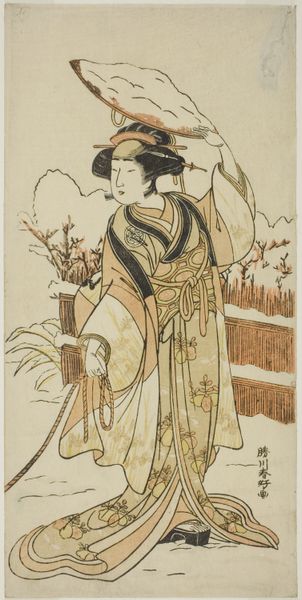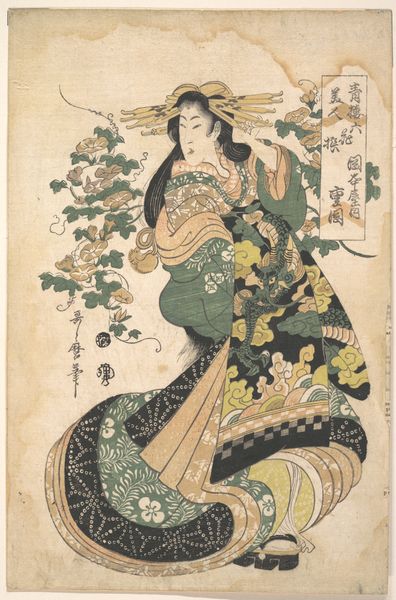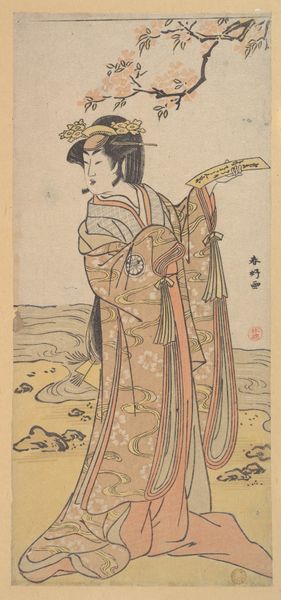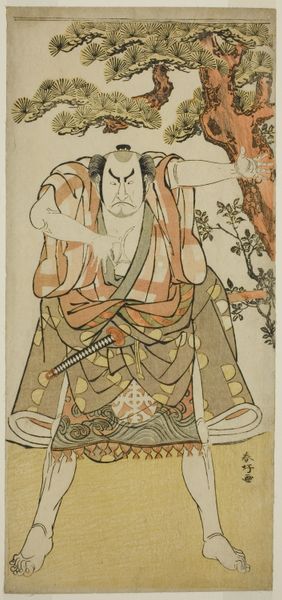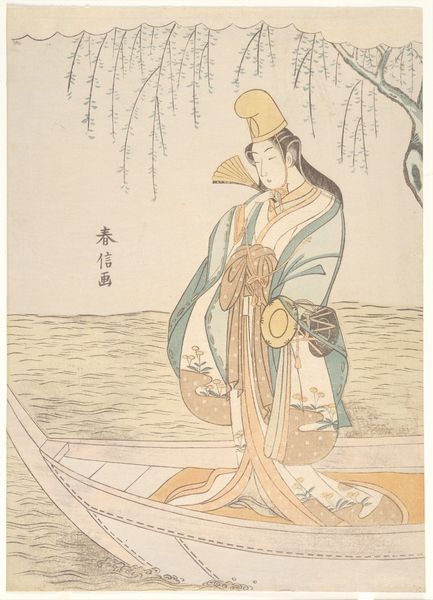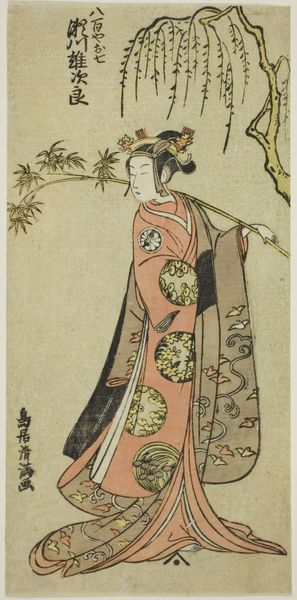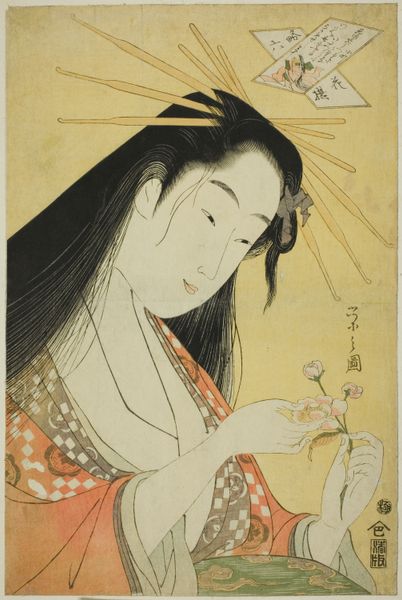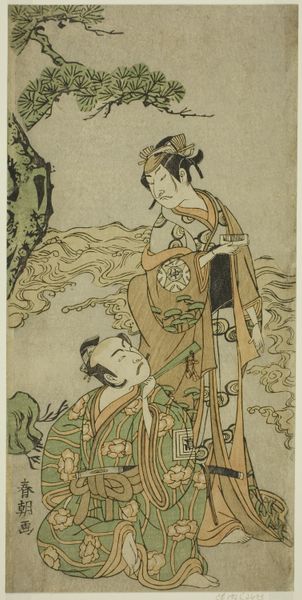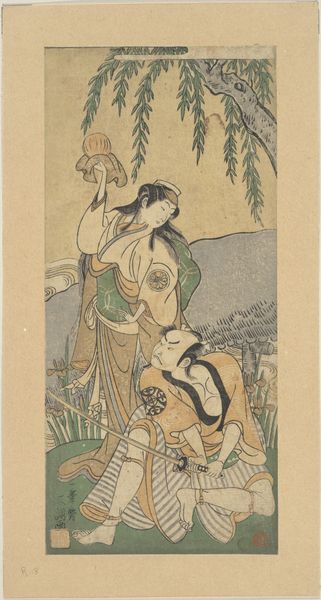
The Actor Segawa Kikunojo III as Yamauba in the Play Otokoyama Furisode Genji, Performed at the Kiri Theater in the Eleventh Month, 1785 c. 1785
0:00
0:00
print, woodblock-print
#
portrait
#
narrative-art
# print
#
asian-art
#
ukiyo-e
#
japan
#
figuration
#
woodblock-print
Dimensions: 31.1 × 14 cm (12 1/4 × 5 1/2 in.)
Copyright: Public Domain
Curator: This woodblock print from around 1785 depicts the actor Segawa Kikunojo III in the role of Yamauba. The artist, Katsukawa Shunko, was known for capturing the likenesses of popular kabuki performers. Editor: There's a stillness, almost a sadness, conveyed through the downcast gaze and the subdued colors. It’s intriguing, given Yamauba’s wild and potentially dangerous nature in folklore. Curator: Indeed. The figure of Yamauba, the mountain crone, carries significant cultural weight. She's a complex character, embodying both nurturing and destructive forces. She often symbolizes the untamed wilderness, a space outside societal norms. Her image evolves across generations as different audiences identify with archetypal characters of myth. Editor: This portrayal seems less monstrous, more contemplative. Look at the delicate rendering of the costume, the subtle patterns, and the emphasis on grace rather than overt power. Do you think this representation served to reclaim the role, softening the edges to align her with other feminine ideals of the era? Perhaps a comment on gender performance within Kabuki itself? Curator: That's an interesting point. The figure is very poised and the composition places a real focus on beauty, and in this particular case, male beauty. This alludes to a long-standing and continuous performance tradition in Japan. This rendition might also subtly address questions of beauty, gender, and theatrical illusion. Editor: The context of kabuki, with its all-male casts, makes this gender play all the more resonant. Perhaps, seeing Yamauba played by Segawa Kikunojo III highlighted the constructed nature of femininity, presenting a more nuanced perspective on female identity than purely monstrous depictions could achieve. The use of 'Onnagata', males portraying women, questions performativity as inherent nature. Curator: I agree, seeing these historic art pieces contextualized helps us rethink how we build shared mythologies, which informs culture building as a society. The woodblock serves as an ongoing reminder of a very complex cultural heritage. Editor: Exactly, it opens up space for critical analysis that moves beyond simply demonizing the “other” – encouraging reflection on constructed binaries within theatre and Japanese culture more broadly. The intersection between folklore, gender, and theatre traditions are beautifully entangled here.
Comments
No comments
Be the first to comment and join the conversation on the ultimate creative platform.
